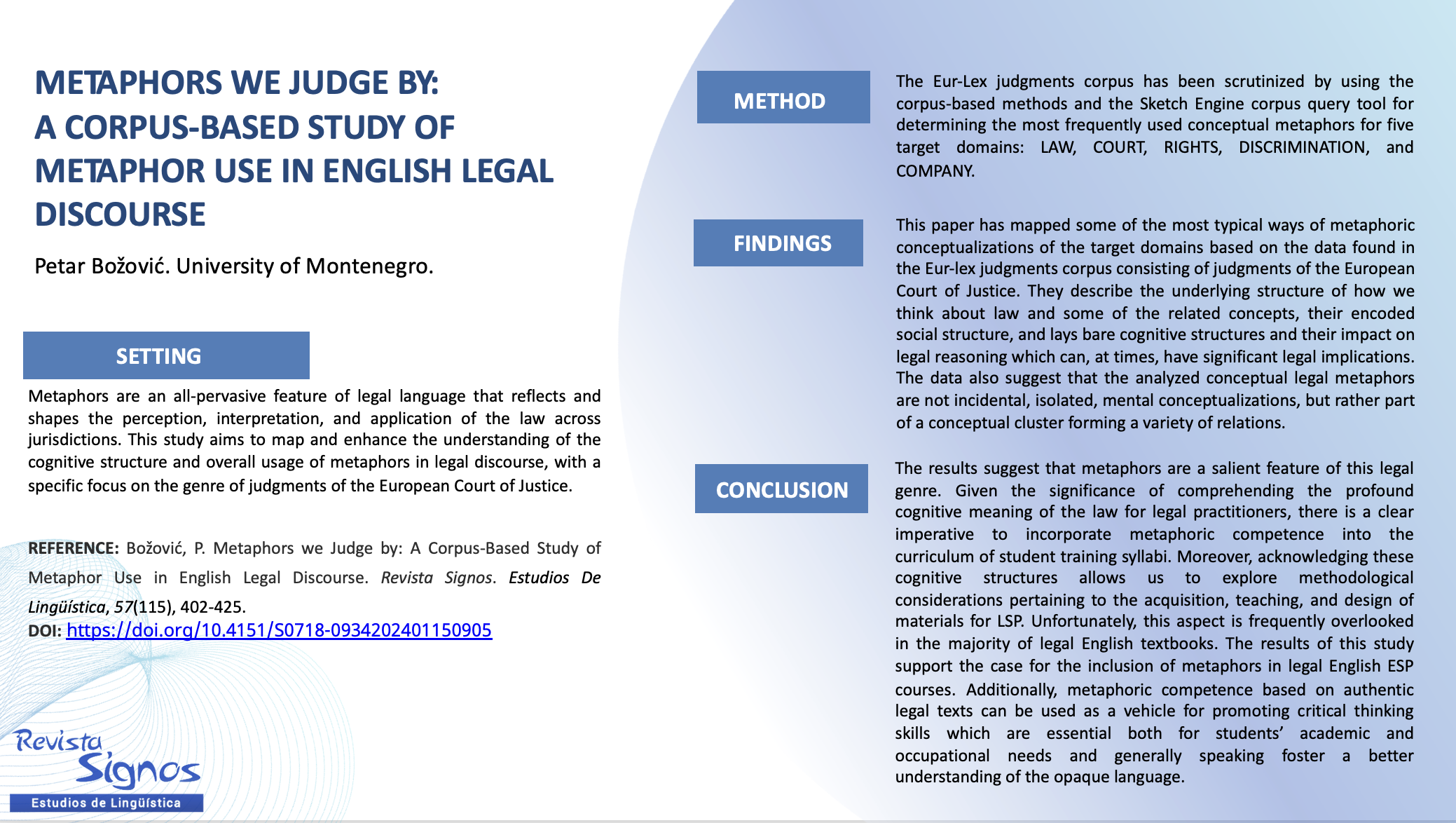Metaphors we judge by
a corpus-based study of metaphor use in English legal discourse
DOI:
https://doi.org/10.4151/S0718-0934202401150905Keywords:
legal metaphors, legal English, European Court of Justice, judgments, English for Specific PurposesAbstract
Metaphors are an all-pervasive feature of legal language that reflects and shapes the perception, interpretation and application of the law across jurisdictions. The aim of this study is to map and understand better the cognitive structure and general use of metaphors in legal discourse with special focus on the genre of judgments of the European Court of Justice. To this end, the Eur-Lex judgments corpus has been scrutinized by using the corpus-based methods and the Sketch Engine corpus query tool for determining the most frequently used conceptual metaphors for six target domains: LAW, COURT, RIGHTS, DISCRIMINATION, and COMPANY. Along with unearthing the most typically used metaphoric conceptualizations for the target domains, the data suggest that the analyzed metaphors are not incidental, isolated, mental conceptualizations, but rather part of a conceptual cluster forming a variety relations. Additionally, some implications have been drawn for teaching legal English by advocating the introduction of metaphors while illustrating the use of corpus-based methodology for the development of effective evidence-based authentic ESP teaching materials to foster metaphoric competence, an area surprisingly neglected in legal English textbooks.
Downloads
Published
How to Cite
Issue
Section
License
Copyright (c) 2024 Revista Signos. Estudios de Lingüística

This work is licensed under a Creative Commons Attribution 4.0 International License.
Copyright agreement:
Authors who have a manuscript accepted for publication in this journal agree to the following terms:
Authors will retain their copyright and grant the journal the right of first publication of their work by means of this copyright agreement document, which is subject to the Creative Commons Acknowledgment License that allows third parties to share the work provided that its author and first publication in this journal are indicated.
Authors may adopt other non-exclusive license agreements for distribution of the published version of the work (e.g., depositing it in an institutional repository or publishing it in a monographic volume) as long as the initial publication in this journal is indicated.
Authors are allowed and encouraged to disseminate their work via the internet (e.g., in institutional publications or on their website) before and during the submission process, which can lead to interesting exchanges and increase citations of the published work (read more here).


